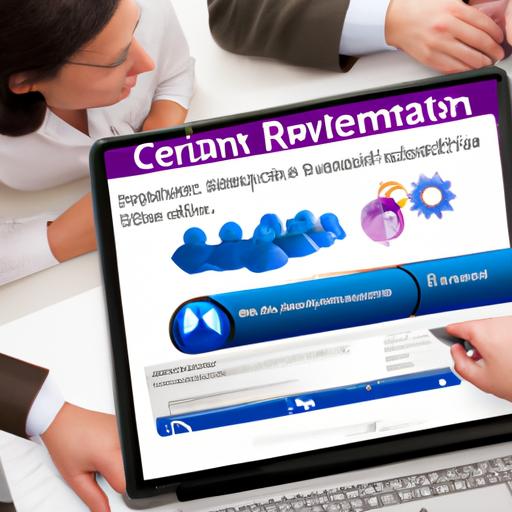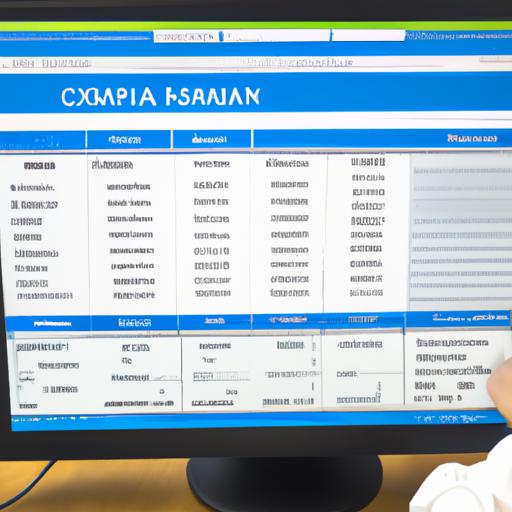As a business owner, you may be familiar with Customer Relationship Management (CRM) software and its impact on business growth. CRM software helps you keep track of customer interactions, sales, and marketing efforts. However, did you know that integrating your CRM software with other tools can significantly enhance its functionality? In this article, we will explore how you can integrate your CRM software with other tools to streamline your business operations, improve customer experience, and increase efficiency.
As businesses continue to grow, the need for integration with other tools becomes more apparent. Integration is the process of connecting two or more systems to share data and functionality. Integrating CRM software with other tools enables businesses to centralize information and automate tasks, leading to increased productivity and reduced errors.
In the next section, we will highlight the benefits of integrating your CRM software with other tools.
Popular Tools for Integrating CRM Software

There are many different tools that can be integrated with your CRM software to maximize its effectiveness.
Integrating your CRM software with other tools can help you manage your business operations more efficiently. There are several tools available that can be easily integrated with CRM software. Here are some of the popular tools that can be used to enhance the functionality of your CRM software:
A. Social Media Platforms
Social media platforms can be integrated with CRM software to gain insights into customer behavior and preferences. This integration enables businesses to track customer interactions on social media platforms and respond to inquiries promptly. Moreover, it helps businesses to create targeted marketing campaigns based on customer behavior and preferences.
B. Email Marketing Tools
Integrating email marketing tools with CRM software can help businesses to create personalized email campaigns and track their effectiveness. This integration enables businesses to target specific customer segments and send them personalized messages based on their interests, preferences, and behavior.
C. Project Management Software
Integrating project management software with CRM software can help businesses to streamline their project management processes. This integration enables businesses to manage their projects more efficiently by centralizing project-related information and automating tasks. Moreover, it helps businesses to track project progress, identify bottlenecks, and allocate resources effectively.
D. Accounting Software
Integrating accounting software with CRM software can help businesses to manage their finances more efficiently. This integration enables businesses to automate their accounting processes and track their finances in real-time. Moreover, it helps businesses to generate invoices, track payments, and manage expenses without leaving the CRM software.
Steps to Integrate CRM Software with Other Tools

Integrating your CRM software with other tools can improve collaboration and communication among team members.
Integrating your CRM software with other tools can seem daunting, but it doesn’t have to be. With careful planning and execution, the integration process can be smooth and seamless. Here are five steps to help you integrate your CRM software with other tools:
A. Identify the Tools to be Integrated
The first step in integrating your CRM software with other tools is to identify the tools you want to integrate. Consider the tools that your business uses most frequently and select the ones that will benefit from integration with your CRM software.
B. Choose the Integration Method
Once you have identified the tools to be integrated, the next step is to choose the integration method. There are several integration methods available, such as point-to-point integration, middleware, and Application Programming Interface (API) integration. Choose the integration method that best fits your business needs.
C. Configure the Integration Settings
After selecting the integration method, the next step is to configure the integration settings. This involves setting up the connection between the systems, mapping the data, and establishing the rules for data transfer.
D. Test the Integration
Before going live, it’s crucial to test the integration thoroughly. This helps to identify and fix any issues before they affect the live data. Test the integration by transferring a small amount of data to ensure that everything is working correctly.
E. Train the Users
The final step is to train the users on how to use the integrated systems. This ensures that they are comfortable using the new system and can take full advantage of its capabilities. Provide training materials and support to assist the users in case they encounter any issues.
Best Practices for Integrating CRM Software with Other Tools

Integrating your CRM software with accounting software can help ensure accurate financial data and reporting.
Integrating your CRM software with other tools can be a game-changer for your business operations. However, it’s crucial to follow best practices to ensure the integration is seamless and error-free. In this section, we’ll explore the top best practices to follow when integrating your CRM software with other tools.
A. Maintain Data Consistency
One of the most critical aspects of integrating your CRM software with other tools is maintaining data consistency. Ensure that all data integrations are accurate and up-to-date, consistently and continuously. This will help prevent errors that could negatively impact your business operations.
B. Ensure Data Security
Data security is essential when integrating your CRM software with other tools. Ensure that sensitive data is protected from unauthorized access by implementing robust security protocols. Also, regularly review and update your security measures to stay ahead of potential threats.
C. Regularly Monitor Integration Performance
Monitoring integration performance is crucial to ensure that the integration is working as expected. Regularly check the integration logs to identify any issues and take necessary action to resolve them promptly. This will help you stay on top of the integration’s performance and prevent unexpected downtime.
D. Keep Integration Documentation Up-to-Date
Keeping integration documentation up-to-date is essential to help you and your team understand how the integration works. This will also help you troubleshoot any issues that may arise. Regularly update the documentation to reflect any changes or updates made to the integration.
E. Provide Continuous Maintenance and Support
Providing continuous maintenance and support for your integration is essential to keep it running smoothly. Ensure that you have a dedicated team responsible for maintaining and supporting the integration. This will help prevent issues and ensure that your business operations continue uninterrupted.
Conclusion
In conclusion, integrating your CRM software with other tools can significantly improve your business operations. It helps you streamline your workflows, improve data accuracy, and enhance collaboration. The benefits of integration are numerous, and it can lead to better customer experience and increased revenue.
To ensure successful integration, it is essential to identify the tools to be integrated, choose the integration method, configure the integration settings, test the integration, and train the users. Furthermore, it’s best to maintain data consistency, ensure data security, regularly monitor integration performance, keep integration documentation up-to-date, and provide continuous maintenance and support.
In summary, integrating your CRM software with other tools is a game-changer for businesses, and it’s a step towards achieving efficiency, productivity, and growth.